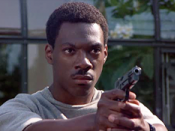A "Foley Artist" recreates differently sound effects for film, tv and radio.
Almost every single movie and tv show contains a "Foley track" created at a "Foley stage" in a post production sound studio.
The term Foley artist is named after Jack Foley. He is best known for helping Universal pictures make the chance from silent movies to "talkies".
A Foley track is needed for many reasons.
When a scene is being filmed, it is not possibly to create all sounds affects in reality. For instance, swords in a fight scene are often made from rubber, plastic or lead and would not make the correct sound but it is impractical and dangerous to use real swords. Another example is when a character in a film or tv show breaks a bone; the actor obviously isn't really breaking anything so the sound needs to be created artificially.
Microphones on sets are set up to hear an actor's every word, and a Foley track is added in later to create a richer and more realistic layer of sound. It is also to help cut out outside noises such as traffic.
Occasionally if footage contains dialogue that is not clear enough to be put in a film, actors will have to go to a Foley stage and re record the dialogue for particular scenes. This is known as Automated Dialogue Replacement. The Foley artist will then have to blend this 'clean' recording in with the footage to make it sound natural. ADR is also used to dub films with other languages.
Foley is often confused with Sound FX. Sound FX deals with things such as engines, explosions, blasts and natural sounds like dogs and birds. Foley deals with things such as footsteps that are not one sound repeated as each step sounds different, clothes moving, handling of objects, etc.
Foley artists often use simple, commonly found materials to create sounds, for instance the thumping of watermelons and snapping of bamboo are often used in fight scenes. In many Italians films and Bollywood films, no sound is recorded on location and is added in later by the Foley artist. (As well as sound designers, sound FX operators and dubbers.)






A short piece on "foley artists" and what they do in the film and television industry
Not bad, could've been a little more descriptive with a better introduction. However, I do not know what the instructions were for this paper.
0 out of 0 people found this comment useful.